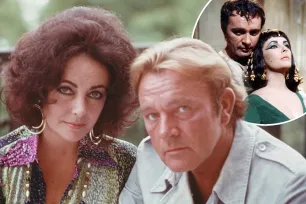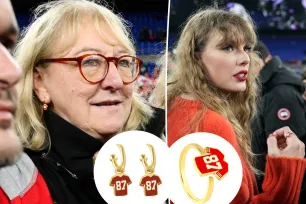Many Tamil historians, including the revered Theodore Bhaskaran, have raised concerns over the paucity of cinema literature and documentation in the past and the present. While Tamil cinema continues to be one of the leading contributors to the field, making close to 250 films a year, the literature about the art form is shockingly meager in comparison. Filling the void, Arun, the founder of the Tamil parallel cinema movement Tamil Studios, has started publishing scripts for popular Tamil films. From the scripts of Vijay’s Leo to Vetri Maaran’s Vada Chennai, Tamil Studio publishes several scripts under its sister brand Pure Cinema. If you had been to the Chennai Book Fair 2024, you would have found the stalls of Pure Cinema teeming with youngsters grabbing the screenplays of Tamil films, a scene that wouldn’t have been possible a few years ago.
We caught up with Arun for a conversation about the movement that has produced several directors in Tamil cinema, the process of screenplay publishing, and his thoughts on why it is important for a healthy cinema industry.

 Cover of scripts of Vada Chennai, Viduthalai, and Leo-2
Cover of scripts of Vada Chennai, Viduthalai, and Leo-2
Can you give an introduction to Tamil Studios and how it all started?
In 2007, I finished a filmmaking course and wanted to make films but couldn’t because of a family situation. So, I joined an IT company and earned well. After settling things, I again came back to make short films. Back then, except for editor Lenin sir, not many knew about short films. At least, the concept of an indie short film was non-existent. While trying to make on, I saw young and naive assistant directors getting scammed by the industry. To bring them all together, we started a website that would have the information of all the technicians etc. But back then, the internet hadn’t become a huge thing. So, we organized a meeting and brought together a lot of aspiring talents. We organized Kurum Padam Vattam (Short film circle) and screened short films in a hall in Egmore for eight years. That forayed into the short film trend, which caught on after Nalaiya Iyakunar (a short film competition show on Kalaingar TV). Karthik Subbaraj, Nalan Kumarasamy, and many directors emerged from that movement. Later, we made a space for ourselves on Facebook and wrote posts criticizing the issues with mainstream cinema. Back then, our cinema was in a bad state. We either had love triangles or family dramas. We spoke about cinema for social change. On top of that, we also came down heavily on the form. Tamil cinema was technically subpar back then. That’s how Tamil Studio emerged. We then brought in a monthly magazine called Pada Surul and conducted workshops for free with leading directors talking about their crafts and many such events. Pure Cinema came into being later.
Publishing Tamil screenplays as a movement hasn’t happened before. What sparked it?
Six years after we started Tamil Studios, around 2015, we started a publishing house. Back then, if you wanted to learn screenplay, the only means was to go join an institute or work as an assistant director. In Tamil, there weren’t enough screenplays or books on cinema. It was happening worldwide. In colleges abroad, there were courses about the transformation of script to screen.
We wanted to explain how the scene was shot and more about every shot. That’s how we made the script book of Mysskin’s Onaayum Aattukkuttiyum. He helped us a lot by providing the script and giving the details behind them. Our students collaborated with him and worked for one and a half years to make it into a book. On one side of the book, you get the script, and on the other, the backstory of it and how it was shot. We did that for every shot of the film. He would have explained the reason behind using yellow light in a scene, the reason why a character wears the watch on his left hand, and intricate details like that. If you read the book and watch the film, you will get the confidence to make a film yourself. The book became a bestseller. Later, we couldn’t do such exhaustive work for all the scripts because it would take years. So, we published other scripts of Mysskin. They were all successful. That started the whole movement.
 Arun
Arun
Many Tamil directors have proudly claimed they don’t write a bound script. In such an industry, how were you able to procure so many scripts? Are some of them reverse-engineered?
There are two types of directors. The new-gen directors are writing scripts for every film. But the previous generation had filmmakers who worked without scripts. Even though they made bound scripts for their first films, with experience, they stopped doing it. The practice shouldn’t be encouraged, but they do it as they have become well-versed with the form. So, most of the scripts we publish are hand-written by the directors themselves. In rare cases, we have written scripts after watching the films, just to encourage the practice and to show it can be written.
Why don’t we have exhaustive Tamil cinema literature?
Our society perceives cinema as a frivolous affair and has a disdainful gaze towards it. Even at the book fair, while youngsters throng our stall, elders cast look down upon it. Another reason is also that cinema is seen as a business here. So, people end up asking what’s the need for such books on cinema. But anyone who is looking to acquire knowledge would never ask such questions. You can never learn anything when you keep asking what’s its purpose. The world would not function if we start asking what’s the purpose of reading literature or philosophy. It’s an absurd question. It is slowly changing but many mainstream films are also the reason behind such a bad name cinema has earned. However, people are also forgetting about the good films that have brought a lot of changes to society.
How supportive are the directors of this movement?
We published the Vada Chennai script only now. Vetri Maaran was quite supportive, and the book is one of the bestsellers of this year. Mysskin has always been a pillar of support to Pure Cinema and Tamil Studios. Lokesh Kanagaraj came forward to provide all his scripts. So, most of the directors are very supportive and that’s why we can do this. Though ours is an alternative cinema movement, without the support of mainstream filmmakers, it will be hard to function. If you want four good cinemas, you need 40 successful mainstream cinemas. Only if you have films like Leo and Vikram, you will get films like Chittha. That’s how the business of the industry goes. I always say that a parallel cinema movement is not to uproot mainstream cinema. It can do some course correction. We have to co-exist and have a symbiotic relationship. The directors are even helping with raising funds for us. So, our success is because of the directors.
Can you name the bestsellers of this year’s book fair?
All-time best seller is Mysskin’s Onaayum Aattukkuttiyum. Last year, all through the year, the best seller was Lokesh’s four screenplays–Maanagaram, Kaithi, Vikram, and Master. This year, on top of all that, Chittha, Leo, Aramm, Goli Soda, and Vada Chennai sold well.
Earlier, at the start of the movement, you were highly critical of the Tamil mainstream. How do you feel about the industry now?
There is a lot of good change in the industry and with me also. What I keep telling my students is that change is not instantaneous like switching on a light. It might take 100 years and the one who started it might not be around to see it.
Disclaimer: The copyright of this article belongs to the original author. Reposting this article is solely for the purpose of information dissemination and does not constitute any investment advice. If there is any infringement, please contact us immediately. We will make corrections or deletions as necessary. Thank you.







